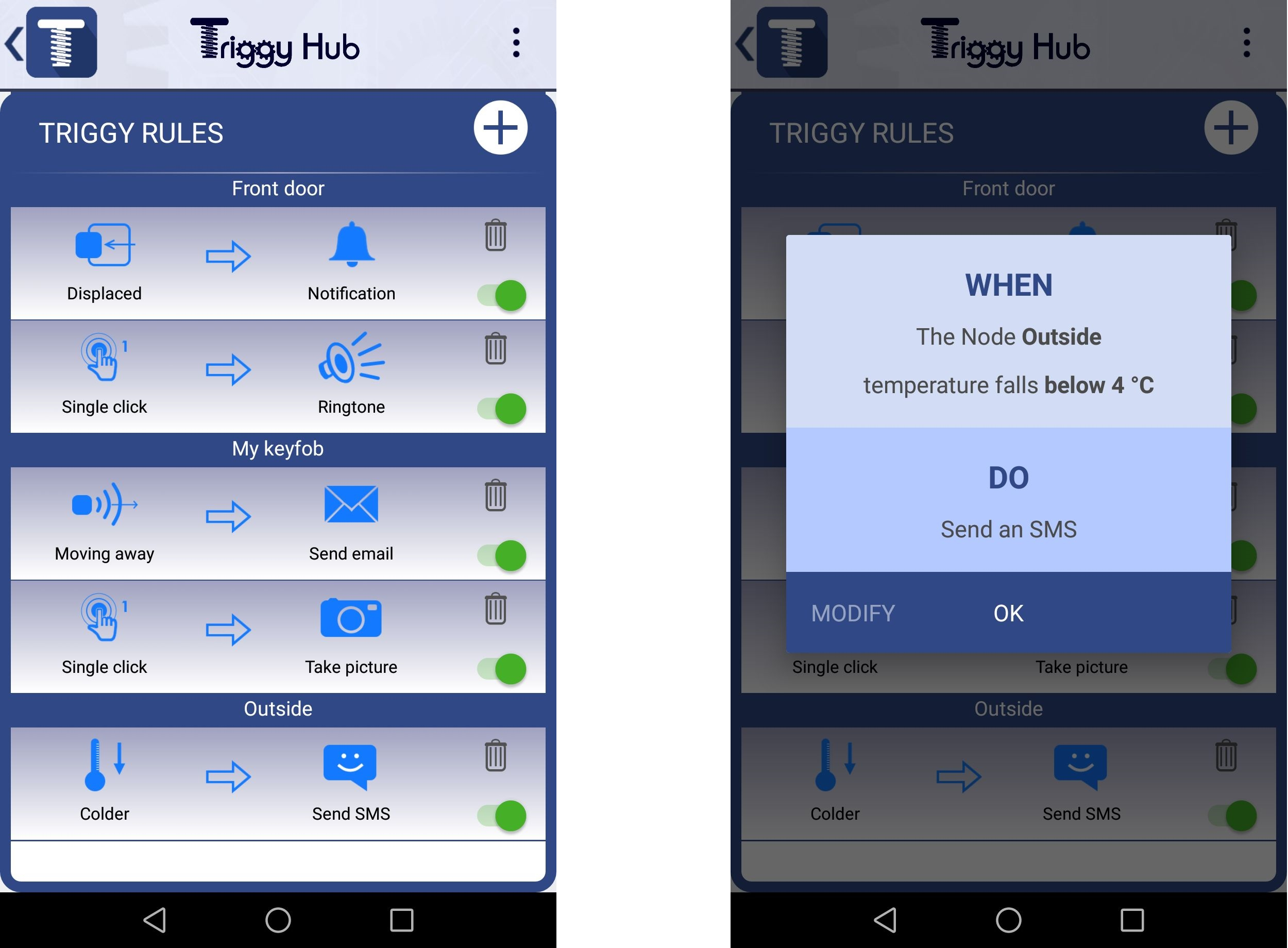I've been working on the Android app for a long time now, as the workload to embed all the features I wanted is quite heavy for a software team of ... 1 guy.
Finally, I believe that today the app development reached a step where it is decently functional (even if a lot more testing is required) and it is graphically quite satisfying to me.
Let's summarize what can be done with this app:
1. Find and list all nearby Triggy Nodes. Some information about the status of each node is provided on the main screen: device name, RSSI/proximity, temperature, displacement status. Below a screenshot with 3 Nodes already configured:

2. Each Node can be accessed more deeply by clicking on the right arrow. This brings the Node connection screen where several control and status are available:
- Sensors status
- Enable/disable/reset position for displacement tracking
- Make the led blink to identify the Node
- Shut it down when not used (no battery removal required)
- Access the Node configuration
- Temperature and displacements logs

3. Node Configuration screen allows to adjust some parameters of the Node:
- Device name
- Displacement detection sensitivity
- Temperature compensation
- Exclusive link: only this Android phone/tablet can see/connect this Node when enabled

4. Back to the Main screen, clicking the app icon brings the Rules List pane. This provides information about currently created rules. Recall that rules allows to trig actions from the sensors state change. Each rule can be deleted, enabled/disabled or modified. Also when clicking on a rule, a summary of what it does is provided.

5. The Rule Builder is where a new rule can be created or existing rules can be modified. Building a rule is done in 5 steps:
- Node selection by its name
- Choice of the trigger (the event which will trigger the action)
- Options for timing, allowing to delay the trigger for example
- Choice of the action
- Rule checking / summary
Depending on the trigger and the action chosen, more parameters can be adjusted (thresholds, options ...)
Below the snapshots for the different steps.

6. The App Menu allows to configure the main parameters such as IFTTT and email accounts, options and so on ... This part still needs to be finalized.
Most of the triggers and actions are functional. I've already created many rules to be used in real situations, so I can say that is works! This version can be considered as an alpha, a significant amount of development is still required for a release, but at least, I can used it for alpha testing.
Major missing functionalities:
- Create a service to have the app working on background without being kill by Android
- Triggers for the expansion board (light level + water/moisture detection)
 Vinch
Vinch
Discussions
Become a Hackaday.io Member
Create an account to leave a comment. Already have an account? Log In.
working on this same project. Where to download this app??
Are you sure? yes | no